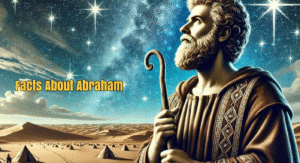Top 10 Fascinating Facts About Blizzards
Blizzards are among the most powerful winter storms in nature due to their heavy snowfalls, frigid temperatures and ferocious winds. Although many people think of blizzards as cancelled flights and warm snow days, there’s much of more in these winter wonders than you can see. From record-breaking snowfalls to intriguing scientific findings, here’s more than 10 interesting and entertaining facts about blizzards to show the power of these giant snowflakes.
1. A Blizzard Isn’t Just Heavy Snowfall
To be officially considered a “blizzard it must satisfy certain requirements. It is the National Weather Service (NWS) defines”blizzard” as a storm that has wind speeds of at least 35 mph, and visibility of one minimum of a quarter-mile and the conditions have to last for at least 3 hours. It’s not just the snowfall that makes snow a blizzard. It’s the combination of a strong wind and poor visibility that makes the blizzards apart from normal snowstorms.
2. Blizzards Can Occur in Unexpected Places
Although we typically consider blizzards to be the northern regions of northern Europe however, they may occur in areas that aren’t typically considered to be prone to snow. For instance there has been reports of blizzards in the south of Texas as well as parts of the southern United States. They are “southern blizzards” are rare however they can be particularly disruptive in areas that aren’t used to these extreme winter weather, usually which can cause large-scale power outages as well as problems with transportation.
3. The Great Blizzard of 1888 Was a Defining Storm in U.S. History
The Great Blizzard of 1888, often referred to by the name of “Great White Hurricane,” is among the most well-known blizzards in U.S. history. It hit the Northeast in the month of March 1888, and accumulated as much as 55 inches of snow with drifts up to 50 feet in height. Its winds topped 45 mph making conditions that slowed cities as well as disrupted railroads and even dug up entire houses. This storm highlighted the necessity for underground infrastructure. This led to the decision of New York City to construct their famous subway.
4. Blizzards Are Common in “Blizzard Alley”
The region that is known in the region known as “Blizzard Alley” encompasses parts of the northern Great Plains, including North Dakota, South Dakota, as well as portions that comprise Minnesota, Nebraska, and Montana. These regions are often hit with storms that cause blizzards because of a combination of flat terrain as well as cool Arctic atmospheric conditions, as well as moist that comes from the Pacific. Blizzard Alley sees some of the strongest winter storms that hit the United States, often bringing whiteout conditions as well as dangerously high wind chills.
5. The Record for Snowfall in a Single Blizzard
One of the strongest snowstorms occurred within the Sierra Nevada mountains in 1959. The storm dropped an astounding total of 189 inches of snow over a period of days! This massive amount of snow demonstrates the enormous power winter storms can unleash especially in mountainous areas where moist air rises. It is cooled, and produces heavy snow.
6. Blizzards Can Cause “Whiteout” Conditions
Whiteouts are among the most hazardous elements of snowstorms. In a whiteout, the massive snowfall and powerful winds can reduce visibility to almost to zero. This makes it difficult even to be able to discern more than one or two feet ahead. This could make people get lost even in a familiar area. Whiteouts can be particularly dangerous for drivers, and can cause massive traffic jams on the highways as well as major road closings.
7. Snow Drifts Can Reach Astonishing Heights
The onset of blizzards can create massive snow drifts as a result of strong winds that create snowfalls and blow it into massive piles. The snow drifts can grow to astonishing highs. During extreme blizzards, they could climb to more than 30 feet. They can stop roads from moving, bury vehicles and make it difficult to get into structures. In some instances snow drifts could completely cover entire neighborhoods or houses and entrap residents until assistance arrives.
8. Blizzards Can Lead to “Frost Quakes”
Extreme cold, especially after an icy storm, may cause a rare phenomenon known as a frost earthquake or cryoseism. Frost quakes happen when the ground’s water expands rapidly and freezes and causes that the soil to break, resulting in powerful, thunder-like sounds. The likelihood of a Frost quake is higher to occur after the heavy snow melts into the ground. It quickly freezes because of dropping temperatures, causing the occurrence of these miniature “earthquakes.”
9. Thundersnow: When Thunder Accompanies Snowfall
Thundersnow is an uncommon weather phenomenon that blends snow with the phenomena of lightning and thunder. It occurs when there is significant upward movement in the air, which produces the same conditions that create thunderstorms, only without rain. Thundersnow can be associated with high snowfall rates of up to 4 inches per hour. This adds the drama of an already severe storm.
10. Blizzards Can Cause “Snow Blindness”
Photokeratitis, also known as snow blindness is a painful ailment that is caused by excessive exposure to sunlight’s UV rays that reflect onto the white. In the event of a snowstorm this condition can be enhanced when sunlight bounces off the fresh snow, causing blindingly bright light. In the absence of protective eyewear, individuals may experience a temporary loss of vision or severe eye discomfort. This is the reason it’s crucial to wear UV-protective sunglasses when in cold weather.
Last Word
From record-breaking snowfalls to the risk from whiteouts can be one of the most stunning and amazing natural phenomena. Knowing the science behind and the impact of blizzards allows us to recognize their beauty, while also recognizing the challenges they present. If you’re watching a blizzard from the comfort of your home or battling the elements afterward of one, these fascinating facts about blizzards show how intricate and captivating snow storms are. Although they can be gorgeous, peaceful landscapes, it’s important to be prepared and safe for the possibility of one hitting, since the blizzards can be as terrifying as they are captivating.






